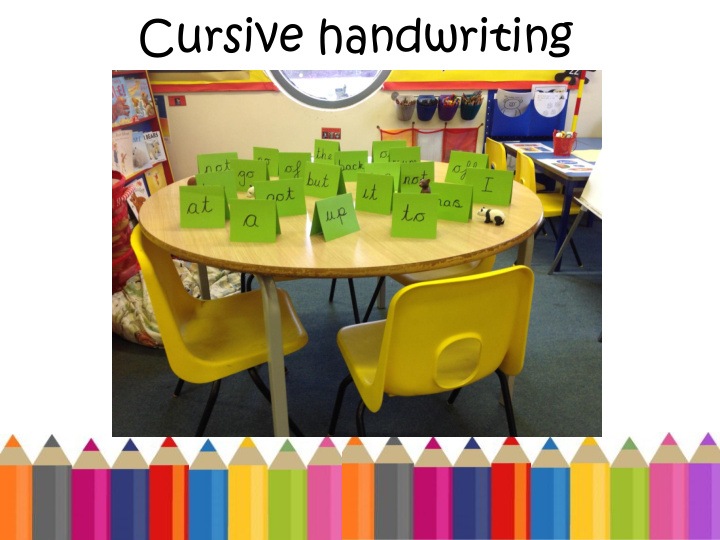



Cursive handwriting
Quotes tes from m pa parents nts at other r sc schools ls following wing the int ntroduc roductio tion n of f cu cursive sive handwriting ndwriting “I am so impressed with his new handwriting style, it’s so grown up!” Y3 parent. “I was concerned about joined handwriting and how my child would get on but I can honestly say it has been fantastic. One day my child wasn’t joining the next she was and she enjoys it.” Y5 parent. “ Fantastic, I am so pleased!” Y2 parent. “We love practising our whoosh ins and whoosh outs at home! I’m trying to get as neat as my child but it’s harder than I thought it would be!” Y1 parent.
It is recommen mended d that at child ldren learn the continuo uous us cursive ive style yle. Typically, when first learning to write, children ‘print’ their letters. They then move on to ‘joined up’ writing at a later stage. For children with dyslexia, learning two styles of handwriting can add an extra layer of difficulty and cause confusion. It is, therefore, much more helpful if a young child can learn to use a single system of handwriting right from the start. The most widely recommended handwriting style is called continuous cursive. Its most important feature is that each letter is formed without taking the pencil off the paper – and consequently, each word is formed in one, flowing movement. The key advantages to this system are: By making each letter in one movement, children’s hands develop a ‘physical memory’ of it, making it easier to produce the correct shape; Because letters and words flow from left to right, children are less likely to reverse letters which are typically difficult (like b/d or p/q); There is a clearer distinction between capital letters and lower case; The continuous flow of writing ultimately improves speed and spelling. http://www.bdadyslexia.org.uk/parent/help-with-handwriting
Res esou ourc rces es
Bef efore ore an and af afte ter- Re Recept eption ion
Be Before fore an and d af after er- Ye Year ar 2
Be Before fore an and d af after er- Ye Year ar 4
Samples o f w ri ting Year 6
Our chosen cursive ve font
Recommend
More recommend